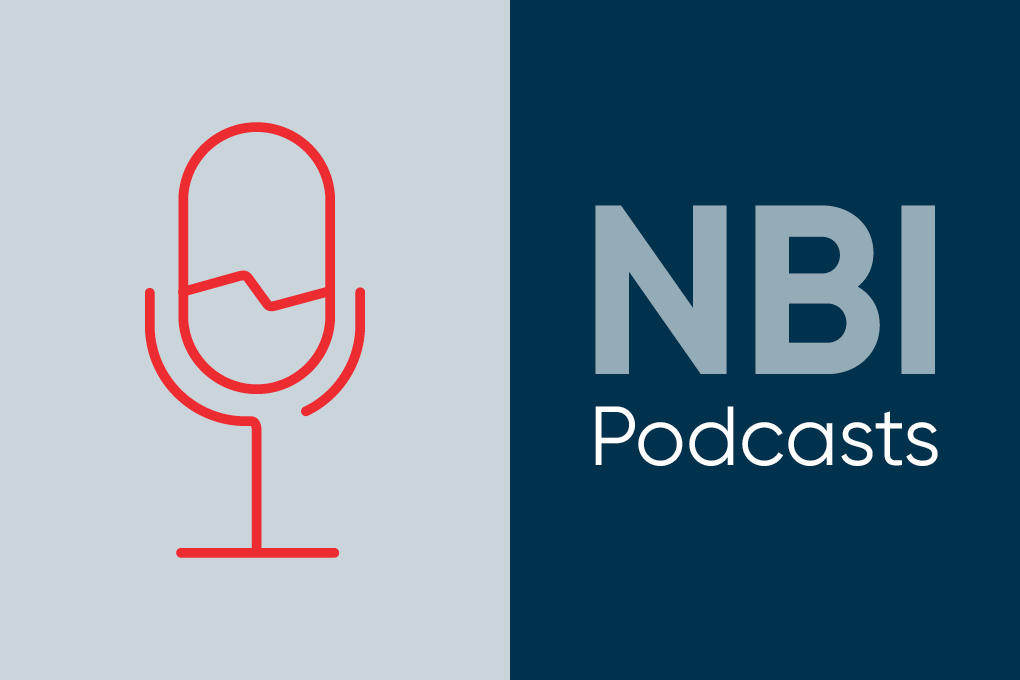Terry Dimock
Welcome to NBI Quick Takes. My name is Terry Dimock, Head Portfolio Manager for National Bank Investments. I’ll be your host for a three-part series focused on real assets.
First of all, a disclaimer. BNY Mellon Asset Management Canada Ltd. is the portfolio manager of the NBI Global Real Assets Income Strategy and its affiliate, Mellon Investment Corporation, is the subadvisor. Today, we are joined by Mellon portfolio managers, Jim Lydotes and Brock Campbell, to chat about real assets. This discussion is for general information only and should not be taken as advice or a recommendation to purchase individual securities.
With me once again: Jim Lydotes, Lead Manager of the Global Real Assets Income Strategy at Mellon for National Bank Investments. Welcome, Jim.
Jim Lydotes
Thanks, Terry. Thanks for having me.
Terry Dimock
In the first two podcasts, we talked about two different industries, but maybe let’s start with what we need as a team and why is active management really important in real assets. What kind of bench strength do you need, panels, experience to really be able to follow these industries’ themes and regulatory bodies and be able to make good decisions?
Jim Lydotes
Well, a lot, I would tell you. If you think about real assets or infrastructure assets, for the most part these are all great businesses. They’re natural monopolies, they generate a lot of cash, they’re really defensive end markets, some of the highest quality businesses in the world. But for a great business to be a great investment, you have to pay attention to what you’re paying, and oftentimes in equity markets, there could be a disruption in the market. And I think active equity managers are uniquely able to arbitrage that disruption and take advantage where there are opportunities.
Active management is really critical in getting closely aligned with company management teams and closely aligned with regulators in the infrastructure space. Regulatory predictability is a huge part of what it is that we’re focused on and sitting down with the regulators, understanding those regulatory constructs, that’s critical and you can only do that with people. So besides myself and Brock managing the strategy, we have a team of 30 career industry sector specialists, research analysts, that we can leverage at the firm. That is really important in being able to get closer to these regulators, closer to these businesses and understand all the nuance there.
If you think about our opportunity set and our fund, generally anywhere from 30 to 40% of the strategy is invested typically in the utility sector. And if you think about a lot of the change that’s happening in the utility space around more and more renewable power coming online, there’s also some disruption happening there around carbon.
In the U.S. today, there’s thought around a carbon tax coming into the market in the U.S., it’s already been put into place in other parts of the world. This is a concept that’s been floated out there for some time. But what does it actually mean? We have security-level carbon data that we’ve been able to pull through. We’ve been able to calculate an actual unfunded liability attached to each of our opportunity set of U.S.-regulated utilities and we can then re-evaluate what it means to the value of these businesses.
This isn’t a conceptual exercise; this is where we can actually put pen to paper, leveraging data that’s available with our fundamental research analysts, our fundamental insight to try to determine what the impact is going to be on these businesses and help us figure out what we should be paying for the assets that we’re putting into the strategy.
I believe that this is really cutting edge use of this type of data and incorporating into our process – again, I don’t know how you can do that unless you have that deep research effort like we do, the 30-person central research department as well as a fine understanding of how you can leverage data that’s available to better understand what it is that we’re willing to pay for our businesses. I think only by being an active manager could you get that level of nuance in evaluating these opportunities.
Terry Dimock
Fast-changing world, changing technologies, changing environments and definitely you need some people that are looking deeply at all these issues to make sure that they’re taken into account when you’re investing, so very interesting.
Let’s dig into another important part of real assets which was transportation. Let’s start off with just the basics: how do transportation companies make a profit?
Jim Lydotes
So, transportation companies, they own assets – think of ports, or airports, toll roads – and they’re able to charge fees for the use of those assets. The fees that they can charge, those are generally set by regulators. We talk a lot about regulatory predictability, meeting with regulators – this is a heavily regulated industry.
Taking into account what these regulators do, they take into account volume assumptions, they make an assumption around what the volume depending on that asset is going to be. Whether that’s a toll road, or whether that’s an airport, what the volumes are going to be. And they’re trying to arrive at what’s a reasonable economic return for the company that spent all that money to put that asset in place. You build a toll road, spend a lot of money to build a toll road, there is a reasonable economic profit that you should expect. And these regulators take volume into account in an economic return when determining what fees to charge on that toll road.
In the case of an airport, every time you land in an airport, a portion of your ticket goes to paying the airport owner what’s called a landing fee, so there’s a set landing fee. And this way, airport owners are less sensitive to the price of the ticket – you and I may be more sensitive to the price – but the airport owners, less because they’re more concerned with just getting that steady stream of volume coming through the airport.
Toll roads operate much the same way. A regulator determines the fee per vehicle that they can charge and the total revenue that they receive will ebb and flow with the volume that’s driven on that toll road.
Terry Dimock
Now we’ve talked about the importance of having analysts dig into all this information, so how do you analyse a concession agreement, looking at the terms and both tenure and tariffs?
Jim Lydotes
Understanding the regulatory backdrop is critical to understanding the outlook for the business. If these are heavily regulated industries, and have to sit through periodic regulatory reviews, that meeting with the regulators, that part of our analysis, that’s a big part of our due diligence.
Another part of the analysis that we focus on is on volume expectations for the assets. As most of these businesses are volume sensitive, we need to feel comfortable that the volume passing through these assets is going to be enough to allow them to earn an allowed return that we think is reasonable. The research here can often involve meeting with airline management teams to better understand how they view volumes passing through different airports, as they’re changing flight patterns, what airports are they favouring or disfavouring? That’s really critical to understanding what those volume patterns are going to be.
The tenure or the duration of these contracts is important as well. If a fair concession agreement is put in place, generally the way we look at it is the longer the better. The longer it is, the more visible it is. This provides more visibility on the revenue that we can expect to receive from that asset.
And a final consideration in our analysis is what opportunities do they have to recognize other forms of revenue. What we mean there is oftentimes an airport or even a toll road will have an underutilised retail opportunity. To the extent that that could be monetized, and we’ve all been in an airport and spent way too much money on a bottle of water and typically half that revenue that you spent for that bottle of water goes right to the airport owner. So that can provide some considerable upside to a business if they’ve underutilised a retail opportunity in the past and they’re in the process of monetising that. That’s the other consideration that we take into account.
Terry Dimock
Now, we’re still in the middle or maybe the later stages of a pandemic and we all got the same surprise in February and March and with the closing of the economies, but the as we look forward, as you’re investing today, what do you see as the state of the industry post-COVID-19? What will be the same, what will be different, how do you see that evolving, and how does that impact how you’re investing?
Jim Lydotes
There’s a lot of nuance in transportation, especially now, post-COVID. And I think you have to separate toll roads form airports, and then even within airports I think you have to draw an even further distinction between business travel and leisure travel within airports. We would generally expect tolls traffic to return to prior pre-COVID levels, generally speaking by the early part of 2021. Some spots have already seen returns to close to those levels. Actually, in some places, you’re seeing an acceleration where toll traffic is actually ahead of where it was prior to COVID. The European travel season is just about finishing. Toll traffic has come in I’d say stronger than most would have expected had we been having this conversation back in the spring.
Business travel within airports… To be fair that’s likely going to come back a lot slower, both because of economic pressures, but also because I think companies have likely realised that much of the travel that was done in the past maybe is not necessary, at least over the near term. I do think that we have seen a little bit of a permanent shift in demand there. But on the leisure side we expect that’s going to come back as soon as we have a vaccine or any type of advanced testing. I don’t believe were going to see any changes long term to demand from leisure travel.
Terry Dimock
Now one part that’s also important is balance sheets and we definitely saw the impact of COVID on people needing capital. What type of digging have your analysts done on balance sheets to make sure that they can see it through COVID and be there on the other side to be able to get back to business?
Jim Lydotes
Evaluating the balance sheets for these businesses is one of the critical points of research that we’re always doing. And I’d say back in the early parts of the COVID crisis, a lot of the volatility that you saw in the space which, in my mind, created a fair bit of opportunity, was around balance sheet strength. The market was questioning how long these companies were going to be able to operate and manage their cashflow with no traffic coming through airports and no traffic going through toll roads. I think that was causing a lot of disruption in the equity market, and that created a fair bit of opportunities so, I’d say you know, understanding the balance sheet strength and covenants and what the cashflow burn is on low levels of activity, is one of the critical points of research that our transportation analysts are always focused on.
Terry Dimock
Thank you very much, Jim. As always, your words are enlightening and relevant. Thanks for participating with us today. For the listeners, I think we’ve gone around these various themes in the last few episodes to really talk about the complexity of real assets, talk about utilities, telecom infrastructure, transportation, and how these assets can be part of a portfolio and that they have strong predictable cashflows that deliver solid returns over time.
Also, I think you’d be able to appreciate the level of analysis, the type of team to look at these assets to really choose between a good investment and a bad one. Hopefully this has been helpful to you and thank you for listening and wish you a very nice day.


 Terry Dimock
Terry Dimock

 James A. Lydotes
James A. Lydotes

